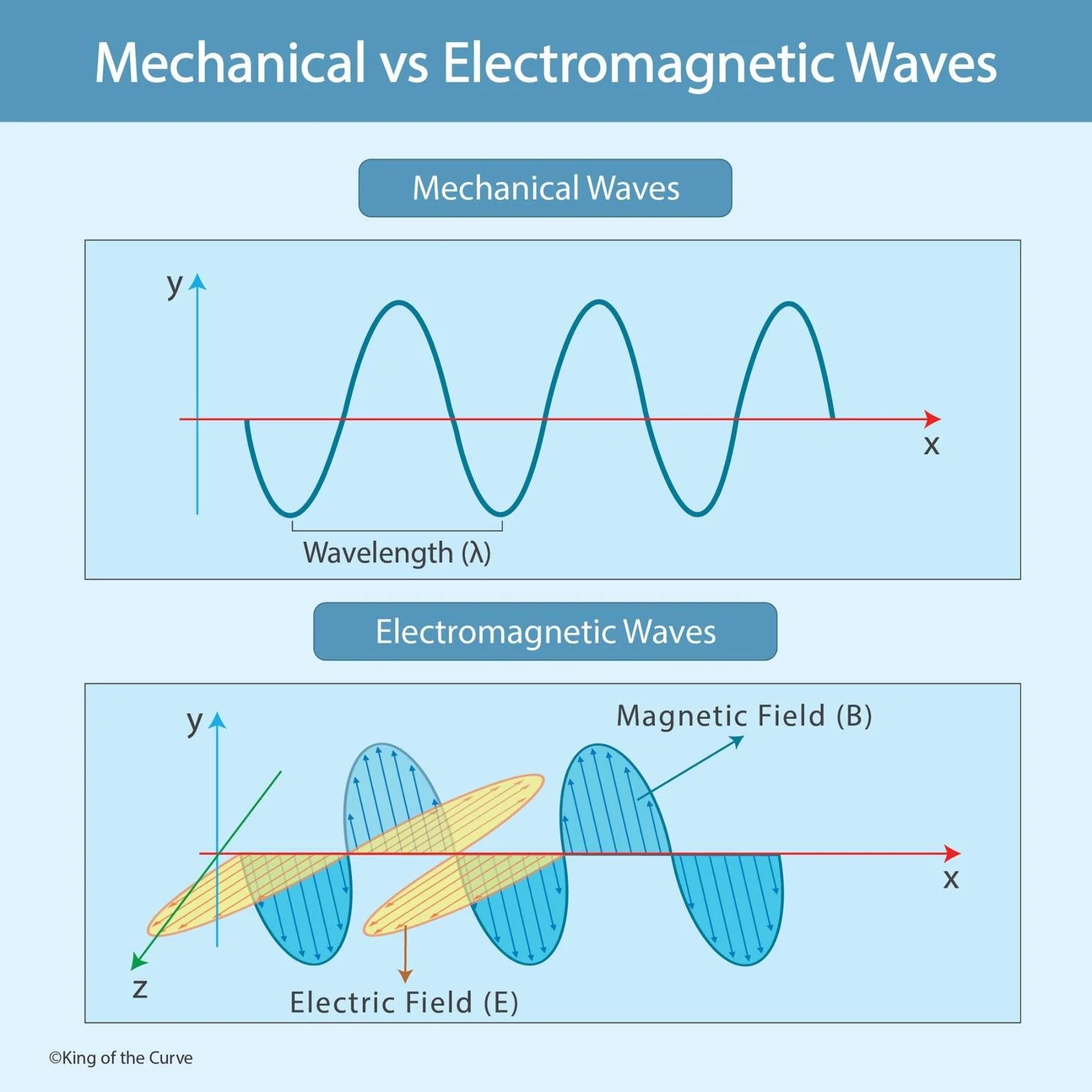🌊 Mechanical vs Electromagnetic Waves: Understanding the Differences
Waves are fundamental to how energy travels through the universe. From the vibrations of a guitar string to the light emitted by stars, waves play a crucial role in transmitting energy and information. However, not all waves are the same. The two primary types mechanical and electromagnetic waves differ in their nature, propagation, and the mediums they require.
⚙️ What Are Mechanical Waves?
Mechanical waves are disturbances that require a medium (like air, water, or a solid substance) to propagate. These waves transfer energy through particle vibration in the medium. Examples include sound waves, seismic waves, and water waves.
Medium Required: Yes (e.g., air, water, solids)
Examples: Sound, ocean waves, seismic vibrations
Speed: Depends on medium density — faster in solids, slower in gases
Mechanical waves can be further categorized into:
Transverse Waves: Particle motion is perpendicular to wave direction (e.g., waves on a string).
Longitudinal Waves: Particle motion is parallel to wave direction (e.g., sound waves).
⚡ What Are Electromagnetic Waves?
Electromagnetic (EM) waves, on the other hand, do not need a medium to travel. They can move through a vacuum, such as outer space, because they are produced by oscillating electric and magnetic fields that sustain each other.
Medium Required: No (can travel through vacuum)
Examples: Light, X-rays, microwaves, radio waves
Speed: Always travel at the speed of light in vacuum (~3 × 10⁸ m/s)
EM waves are transverse in nature, meaning the electric and magnetic fields oscillate perpendicular to each other and to the direction of wave travel.
📊 Comparison Table: Mechanical vs Electromagnetic Waves
Here’s a simple comparison table to help visualize the key differences:
| Feature | Mechanical Waves | Electromagnetic Waves |
|---|---|---|
| Need for Medium | Require a medium to travel | Can travel through vacuum |
| Examples | Sound, water waves, seismic waves | Light, X-rays, microwaves, radio waves |
| Nature | Transverse or Longitudinal | Always Transverse |
| Speed | Depends on the medium | Constant in vacuum (3 × 10⁸ m/s) |
| Energy Source | Vibration of particles | Oscillation of electric and magnetic fields |
🚀 Why This Matters
Understanding the distinction between these two wave types is essential in multiple scientific and technological fields. From telecommunications (radio waves) to medicine (ultrasound and X-rays), wave behavior shapes innovations that power modern life.
🧠 Final Thoughts
While mechanical waves depend on physical interactions, electromagnetic waves are self-sustaining, making them vital for wireless communication and energy transfer in space. Whether you’re studying physics or just curious about how energy moves, mastering this concept will deepen your understanding of how the universe communicates energy in motion.
📚 Call to Action
Ready to explore more fascinating science visuals?
👉 Follow King of the Curve for more simplified breakdowns of complex topics, from cellular biology to electromagnetic theory. Let’s keep learning smarter one diagram at a time!
Frequently Asked Questions (FAQs)
-
Aim for 4-6 focused hours, ensuring you incorporate breaks to avoid burnout.
-
Practice mindfulness techniques, take practice exams under realistic conditions, and maintain a balanced lifestyle.
-
Set short-term goals, seek support from mentors, and reward yourself for small achievements.
-
Regular exercise improves focus, reduces stress, and enhances overall mental clarity.
-
KOTC offers personalized learning tools, gamification features, and adaptive question banks to help students stay on track without burnout.


